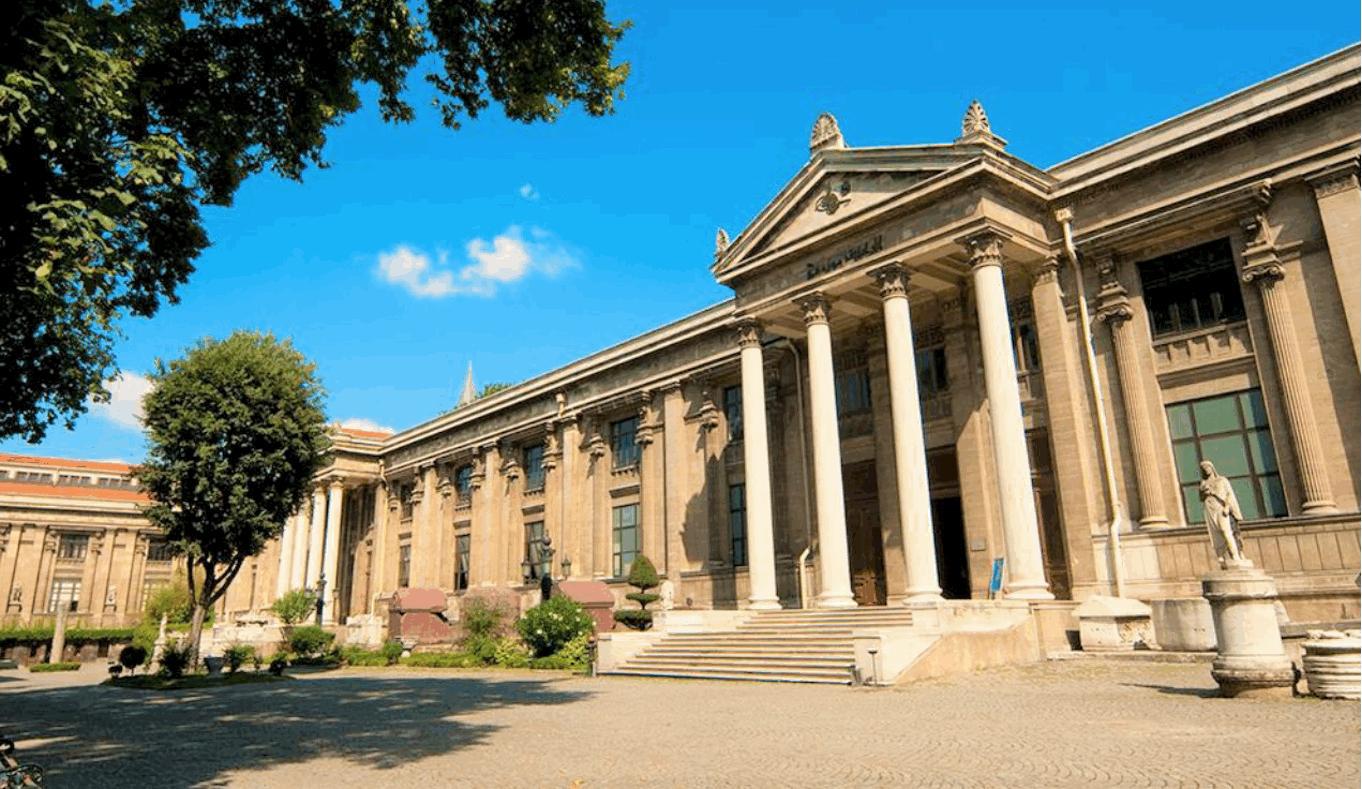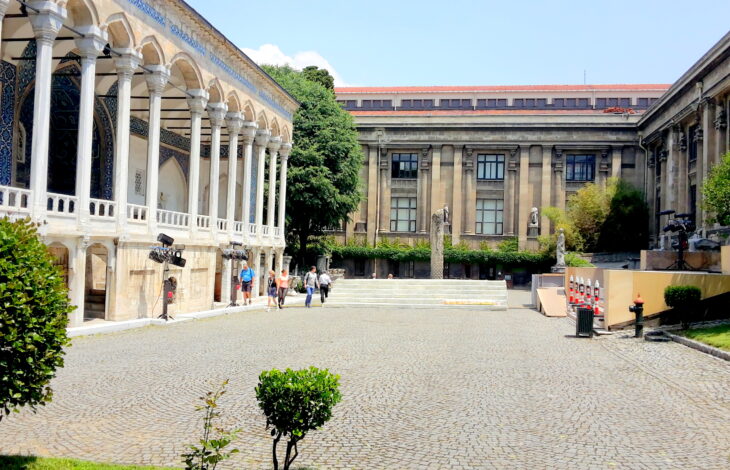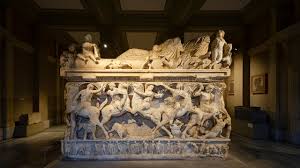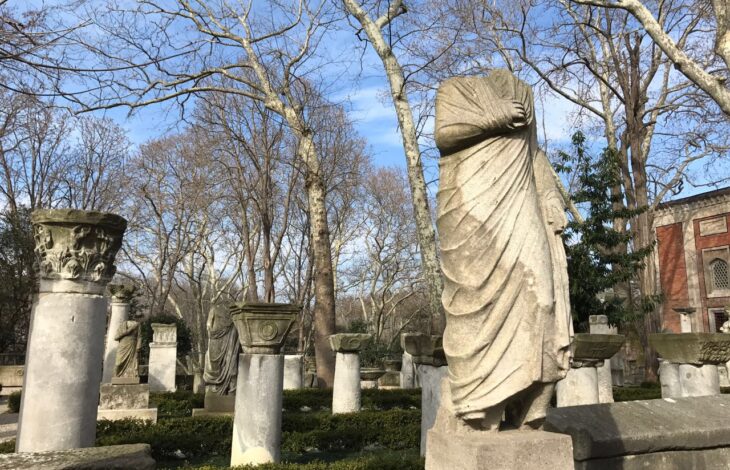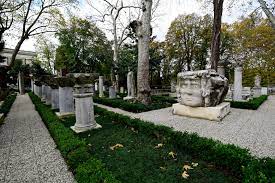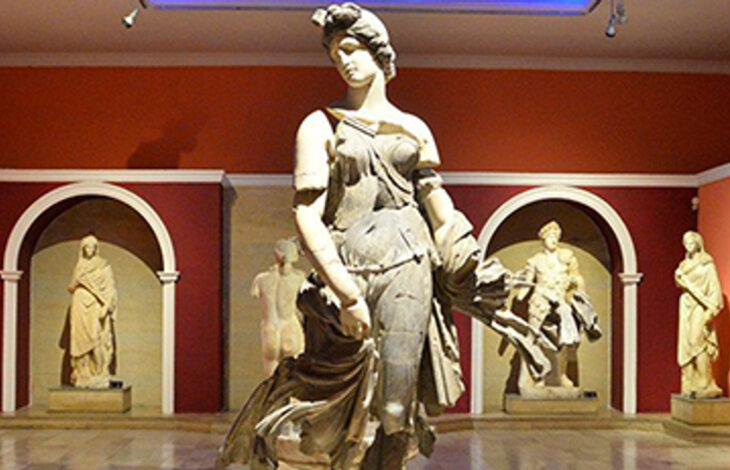
ISTANBUL ARCHAEOLOGICAL MUSEUMS
The Istanbul Archaeological Museums is a complex of three main units: the Archaeology Museum, the Museum of the Ancient Orient, and the Tiled Kiosk Museum. As Turkey’s first museum, the Istanbul Archaeological Museums house nearly one million artifacts from various cultures brought from across the former imperial territories.
Interest in collecting historical artifacts in the Ottoman Empire dates back to the reign of Sultan Mehmed the Conqueror. However, the institutionalization of museology began in 1869 with the founding of the “Müze-i Hümayun” (Imperial Museum), marking the origins of the Istanbul Archaeological Museums. Located in the Hagia Irene Church, the museum initially displayed archaeological artifacts collected up to that time. When Hagia Irene became insufficient for exhibitions, the Tiled Kiosk—originally commissioned by Mehmed the Conqueror—was converted into a museum. Restored and opened to visitors in 1880, the Tiled Kiosk remains a part of the Istanbul Archaeological Museums today.
A new era in Turkish museology began in 1881 with the appointment of Osman Hamdi Bey as museum director. He conducted excavations at sites such as Mount Nemrut, the necropolises of Myrina, Kyme, and other cities in the Aeolis region, as well as the Temple of Hekate at Lagina. His most notable excavation was the Sidon King Necropolis in present-day Lebanon, conducted in 1887–1888, from which he brought back numerous sarcophagi, including the world-famous Alexander Sarcophagus.
The oldest building in the museum complex is the Tiled Kiosk, dating back to 1472. It currently functions as the Tiled Kiosk Museum, displaying Turkish tiles and ceramics, and stands as one of the oldest surviving examples of Ottoman civil architecture in Istanbul.
The building now known as the Museum of the Ancient Orient was originally constructed in 1883 as the School of Fine Arts (Sanayi-i Nefise Mektebi), commissioned by Osman Hamdi Bey. The architect was Alexander Vallaury, who would later design the main building of the Istanbul Archaeological Museums. When the school relocated to Cağaloğlu in 1917, the building was repurposed for museum use.
The Archaeology Museum building itself is one of the rare structures of its time designed specifically as a museum. It stands out as a remarkable and grand example of Neo-Classical architecture in Istanbul. The pediment bears an Ottoman inscription reading “Asar-ı Atika Müzesi” (Museum of Antiquities), and above it is the tughra (imperial monogram) of Sultan Abdülhamid II.
Due to the need for a new exhibition space to display the magnificent sarcophagi brought from the Sidon King Necropolis—such as the Alexander Sarcophagus, the Sarcophagus of the Mourning Women, the Lycian Sarcophagus, and the Sarcophagus of Tabnit—a new museum building was constructed opposite the Tiled Kiosk by renowned architect Alexander Vallaury. This main building of the Istanbul Archaeological Museums was officially opened to visitors on June 13, 1891.
Please note: Exhibition Halls 1, 16, 17, 18, 19, and 20 on the ground floor of the main museum buildings, as well as all galleries on the upper floor, are currently closed to visitors. In the Annex Building, the “Assos Exhibition Hall” and the “Cultures Surrounding Istanbul: Thrace, Bithynia – Byzantium” exhibition hall are also closed to visitors.
Location Map
Contact Information
Alemdar Caddesi,Osman Hamdi Bey Yokuşu, Gülhane / Fatih0212 520 77 40istanbularkeoloji@ktb.gov.trhttps://muze.gov.tr/muze-detay?SectionId=IAR01&DistId=IAR
Today’s Business Hours
Now: closed 09:00-18:50- Show All Week’s Timing
- Monday09:00-18:50
- Tuesday09:00-18:50
- Wednesday09:00-18:50
- Thursday09:00-18:50
- Friday09:00-18:50
- Saturday09:00-18:50
- Sunday09:00-18:50


